Welcome back to Sound & Vision, the Rumpus profile series that spotlights the creative talents of those working behind the scenes in the music industry. In this installment, I’m really excited to share my recent conversation with Leah Hayes, who is not only an acclaimed illustrator and graphic novelist, but also a songwriter and musician. She’s the author of several books, including the illustrated short story collection Funeral of the Heart and, most recently, Not So Funny Ha-Ha, which chronicles the experiences of two young women who have abortions. Hayes’s incredible visual work has also appeared in publications including the New Yorker, the New York Times, and McSweeney’s Quarterly, not to mention a Ryan Adams limited edition vinyl release. As a musician, she has written songs for pop and hip-hop artists, and collaborated with David Ivar of Herman Dune, and the band TV on the Radio. Hayes now fronts her own eclectic band, Scary Mansion.
***
The Rumpus: I first came across your work as a writer/illustrator. Your book Holy Moly, which came out in 2005, was based on ballpoint pen doodles in a marble composition book. Was this work done when you were studying illustration at Parsons? Did you intend to have it published, and if not how did that come about?
Hayes: I was an illustration major, and I was a big doodler. Crazy doodler! [Laughs] In my senior year I had a great portfolio class, but during the class I was doodling under my desk constantly. I ended up putting the doodles in a book and working on them outside of class at coffee shops and stuff like that. After I graduated I decided, kind of on a whim, to send it to Fantagraphics and they called me about six months later!
Rumpus: So this work was strictly “extra-curricular”?
Hayes: By my senior year, we were encouraged to explore wilder ways of drawing and developing our own style, but I had grown up learning a more traditional, almost old master style, and it wasn’t until I let myself break out and do “weirder” drawings, disproportionate figures and stuff like that—playing with text as well—that I started to really develop my own work. I teach illustration on the side myself now, and I always encourage my students to doodle because it can be so productive.
Rumpus: Were you also making music while you were in school? I read that after school you moved to France where you were in a duo called Satan’s Fingers, collaborating with David Ivar from Herman Dune. Did you think at this time you might pursue a career in music rather than illustration? Or were these always concurrent for you?
Hayes: I’d been making music since high school, and my post-school band was signed to a French label. We played a lot in Europe, and also in New York. My visual work and music were always separate but I tried to do them simultaneously because I loved them both and couldn’t imagine giving one up for the other—much to the chagrin of my dad who was always like, “When are you going to choose a career?” My expectations for being a “professional” musician were maybe lower than those of being an illustrator in terms of my bread and butter because I thought of music as more just for fun. But later on I moved to Los Angeles and started writing music for other artists, and that actually became my bread and butter. Ultimately they both started being that for me.
Rumpus: In 2006 you sang a duet with TV on the Radio on their song “Snakes and Matyrs”—how did that come about?
Hayes: They are actually super good old friends of mine from Brooklyn. I’ve known Kyp Malone forever. He’s one of the people who saw me doodling in those coffee shops and he literally sat me down one day and asked, “Have you ever thought about sending this to publishers?” Without his support, I don’t know if I would have ever sent in the book that became Holy Moly… For how we got together on the song, I used to live down the street from the guys in the band and we were all playing music with each other constantly. My band opened for them at shows, and they just called me one night and said they were in the studio and asked if I’d like to come over. That’s how I ended up on that song. They are dear to my heart, and I miss that time in Brooklyn, which was very different and special. There were so many bands, some not yet famous, all living near each other, hanging out together as friends.
Hear Hayes’s duet with TV on the Radio:
Rumpus: Your second book, Funeral of the Heart, was published a couple of years later, in 2008. It’s a collection of short stories accompanied by scratchboard illustrations. Tell me more about your concept here. For example, in the opening story, “The Bathroom,” a middle-aged couple discovers a mysterious tunnel in their pool house after a neighbor’s child accidentally drowns in their pool. The tunnel leads to another drowning—their own. I’ve heard the stories described as fables for adults. Is that an accurate description?
Hayes: Yes… or really, really, really upsetting fables for children. [Laughs] They were meant to be for adults primarily. I think for me that book was about experimenting with creative writing. I had always been an artist but hadn’t formally written a book of short stories. I wanted to explore that, and also the medium of scratchboard, which I really loved. It’s awesome but it can be a tedious medium.
Rumpus: Is that because it’s indelible, once you make a mark it’s permanent?
Hayes: Yes, and I’m kind of teasing because I do love it, and I still use it and teach it to my students. But it is very unforgiving, and so the work can be slow going.
Rumpus: Your application is quite novel— before I read your book, I hadn’t seen scratchboard used for graphic storytelling or hand lettering.
Hayes: That’s true. I’ve become known for it through that book though, and I still get called on to use it for editorial work.
Rumpus: I think I’m seeing crossover here between your visual work and your music, in the way you take a “tool” and apply it in an unconventional way. I understand your debut album Scary Mansion also came out in 2008. Tell me more about that. As I understand it, the band is is probably the world’s only thunderstick, bass, and drum trio. For readers who may not be familiar, what’s a thunderstick and how are you using it?
Hayes: It’s essentially a small, twangy three-string travel guitar tuned to different keys. It almost has an Appalachian sound, maybe a little like a dulcimer or a banjo, but I often put it through distortion pedals, which give it a totally different sound.
Hear Scary Mansion’s song “Scum Inside”:
Rumpus: An otherworldly sound indeed. Your band is musically eclectic, drawing from multiple genres including folk, Goth, and some elements of “indie” which has drawn comparisons to bands like the Pixies and Weezer. Can you describe your song writing process? Do you typically begin with lyrics or melody?
Hayes: I go back and forth. Often it’s melody but sometimes it’s a phrase that has been ruminating in my mind.
Rumpus: You’ve also written songs for pop and hip-hop artists including Lil’ Wayne, Dillon Francis, Savoir Adore, Bonnie McKee, Kill FM, Tommy Trash, and others. What are some of the process differences for you between writing songs for yourself and writing songs for other artists?
Hayes: The biggest difference is that when you’re writing for other artists, you’re in their head—or that’s often the goal. Sometimes they write music themselves, other times they’re singers or performers who don’t write music at all or do so very little. Either way they have ideas about what they want to say. You may base the song on things that are happening in their lives or their emotions, and that’s really fun and exciting. When you’re working with an artist who is more directly involved in the writing process, sometimes they are working with a songwriter to collaborate. Maybe you’re sitting together at a piano, or a computer sometimes, and you’re helping to craft the song with them. Sometimes I’m drawing from my own experiences, but also trying to see through the eyes of the other person in the room with me. Sometimes I will ask them questions about their life, or even their day. The idea is to get them talking. It’s a starting point for a storyline we can create together.
Rumpus: You also did the package, which included a cover and comic book insert, for the limited edition vinyl release of Ryan Adams’s “Cardinology” and your illustration work has appeared in the New Yorker, the New York Times, Newsweek, and other publications. Again, are there differences for you between illustrations you’re making in relation to your own projects versus those you’re making for others?
Hayes: Ryan’s album in particular was very specific because he was very giving and understanding about my style, and he encouraged me to explore his lyrics but with the freedom to do my own thing. For the insert I approached the lyrics almost like a script, but for the cover I wanted to draw something on my own. I expected him to ask me for changes when he saw it but he liked it just as I did it.
Rumpus: Do you feel that your illustration work has become more narratively concrete over time? For example, in 2015, you published a book entitled Not Funny Ha-Ha—it’s a graphic novel about two young women from different backgrounds who experience different abortions, one medical and the other surgical.
Hayes: I have had personal experiences with abortion and know many women in my life who have as well and have different feelings and thoughts about it. That’s also true for men, friends and family members who have been connected in some way to abortion and/or who have helped or supported women who have had abortions. I was trying to figure out my next book for Fantagraphics, and I had other ideas, but I kept circling back to this one, what it would be like to draw these experiences. I almost started it as a therapeutic thing to see how I felt about this complicated experience, but it took off from there.
Rumpus: The book doesn’t go into the circumstances of their respective pregnancies, or their decisions to have the abortions. Instead you’re really focusing specifically on the procedures themselves, walking readers through what to expect both physically and emotionally. It’s sort of like “What to Expect When You’re Not Expecting to Expect.” Tell me more about why you decided to take this approach.
Hayes: When I started working on the book, I wanted to see if there was anything else out there like this. I didn’t find anything close. There are almost no graphic novels out there as straight up about abortion. Some had scenes or chunks where abortion was part of the storyline, but nothing that really walked readers through it.
Rumpus: Are the main characters, Mary and Lisa, based on specific real-life people or are they composites?
Hayes: I’d say kind of both. There aren’t literally two women, Mary and Lisa, but they are more composites of different people including myself who represent two kinds of abortion. In this country, at the moment, people are more familiar with surgical abortion. In Europe, the medical kind is more common. I wanted to represent both experiences.
Rumpus: Recently Planned Parenthood has been threatened with defunding, Vice President Mike Pence has spoken encouragingly before a rally of anti-abortion advocates, and the Supreme Court nominee Neil Gorsuch is also said to be opposed to abortion. Have you experienced much blowback?
Hayes: Personally I haven’t experienced backlash from the book, but recently I have had more people coming to me with ideas about how it can be used. I think it’s because people are freaking out. It’s really bad right now for women’s health issues, but organizations have reached out to me about different ways my book can be used in workshops or advocacy programs, in schools, and things like that. I’m working with Planned Parenthood in Massachusetts to do some workshops this spring.
Rumpus: I’ve heard a lot of folks say we’re in a weird time right now, like we’ve boarded a time machine and landed back in the 1980s. As I understand it, the song “Girls Just Want To Have Fun” was originally written by Robert Hazard from the point of view of a guy getting laid by lots of women, and knowing what they want. In 1983 Cyndi Lauper’s version transformed it into an upbeat rallying cry for sexual equality. Scary Mansion covers the song as well. What’s your take on it?
Hayes: I think that is an amazing, powerful rallying song. It’s one of my favorite songs in terms of empowering women in general, and I was so stoked to see the reference on signs at the Women’s March. For covering it, I think I have a kind of “sad” voice, or at least one with a melancholy aspect to it. I was drawn to that song because it’s so upbeat and not at all like one I would write myself, just because I stink at writing happy songs. So I was thinking that I really love that song and I sing it all the time, but what would it be like if I covered it, and brought out that contrast?
Rumpus: I also really like that you’re doing something novel with it, just like with the scratchboard and the thunderstick. Are there specific projects you have in the works now, and/or would like to take on in the future, musically and in terms of writing and illustration?
Hayes: Yes! I have a lot of things in the works, including a new book and a new album. Another really exciting thing is that I’ll be further developing Not Funny Ha-Ha. Keep an eye out for more on that soon!
***
BONUS MATERIAL
Here’s a detailed view of a gorgeous cover designed by Hayes for McSweeney’s:
This is Robert Hazard’s version of “Girls Just Wanna Have Fun”:
And here’s Scary Mansion’s interpretation of the song:
***
All images aside from the Ryan Adams and McSweeney’s covers courtesy of Leah Hayes/Fantagraphics.
***
This interview has been edited and condensed. If you’d like to recommend someone for “Sound & Vision,” drop Allyson a line here.

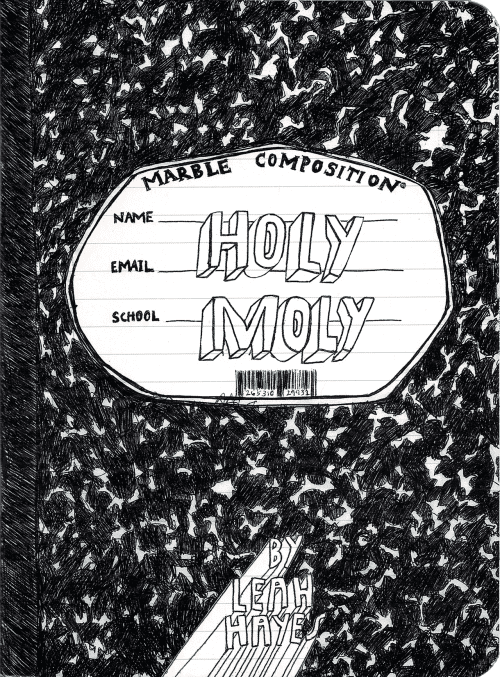
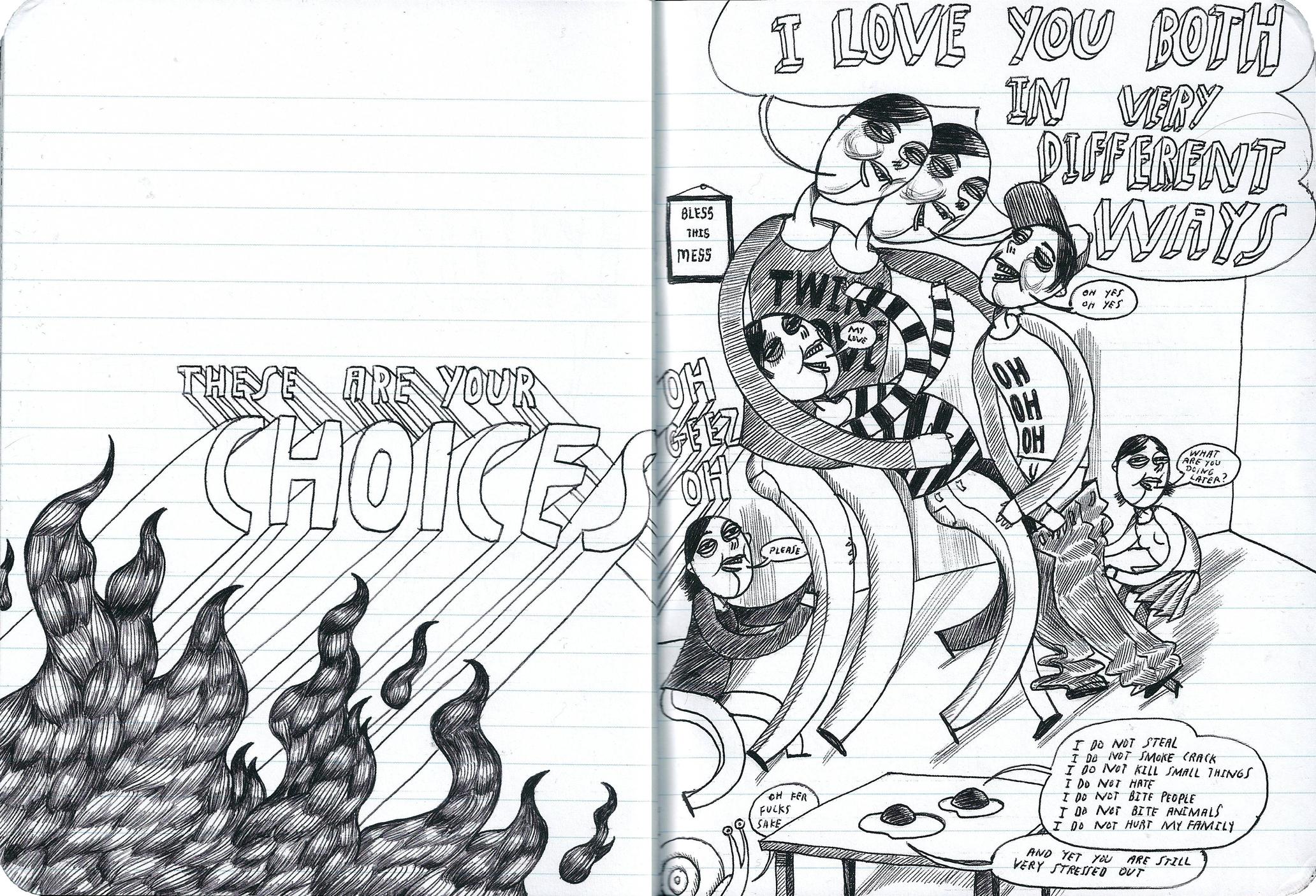
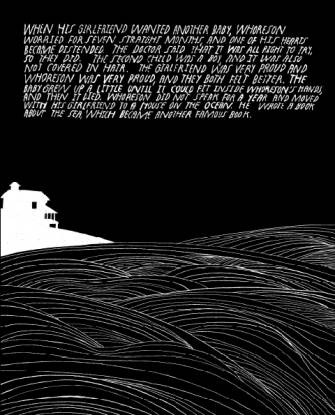

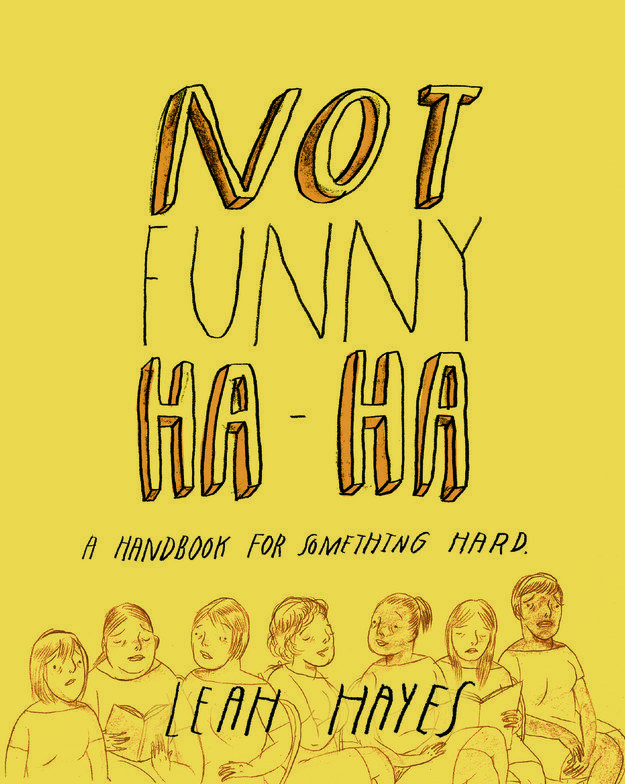
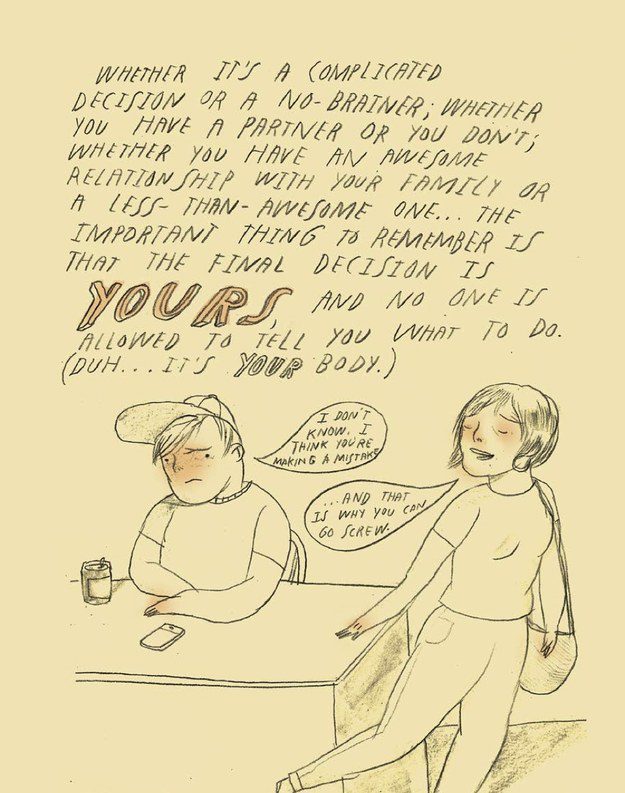
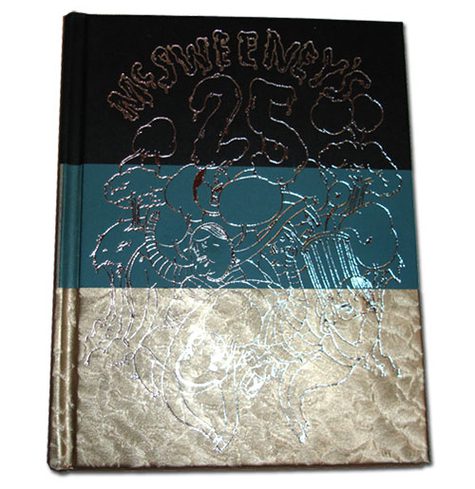




One response
Leah Hayes is fantastic! She led a few much-needed workshops in Salt Lake City last year and her art and music is of must-consume nature.
Click here to subscribe today and leave your comment.